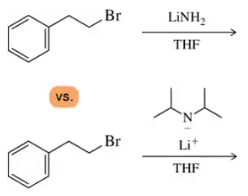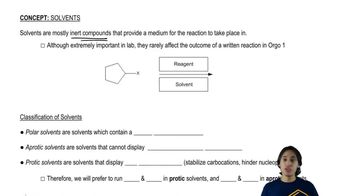Predict the product(s) that would result when the following molecules are allowed to react under the following conditions: (v) H2O; (vi) NaOH, H2O. If there is no reaction, write 'no reaction.'
(f)

 Verified step by step guidance
Verified step by step guidance Verified video answer for a similar problem:
Verified video answer for a similar problem:



 2:27m
2:27mMaster Overview of the flowchart. with a bite sized video explanation from Johnny
Start learning